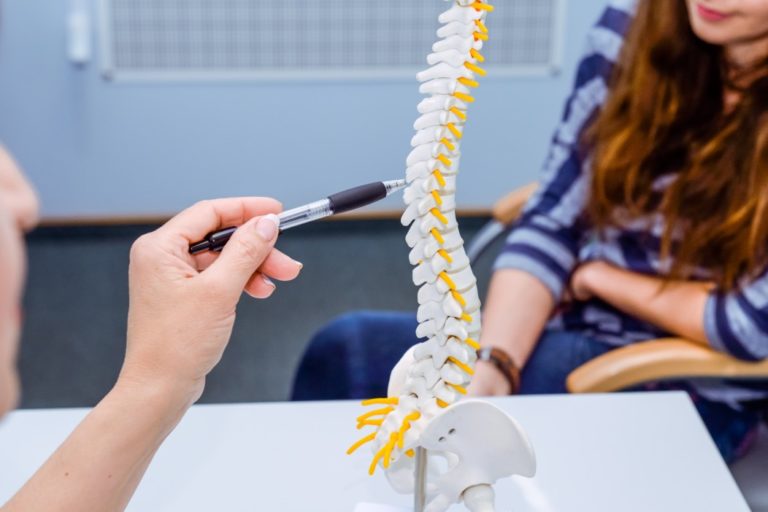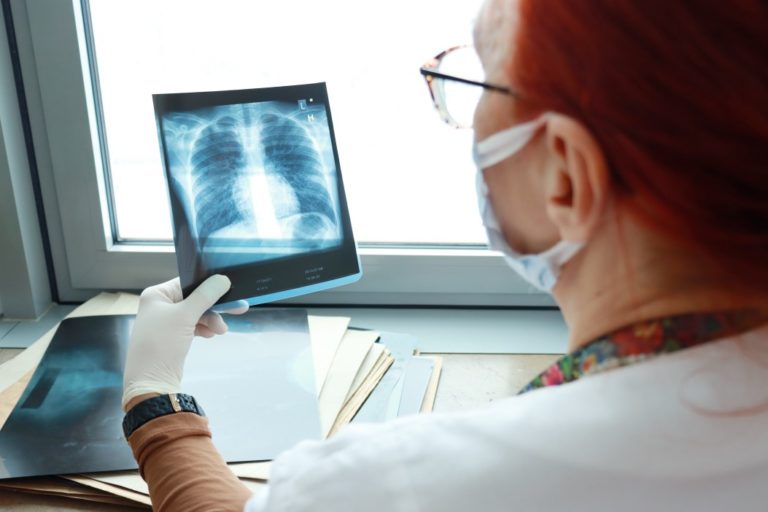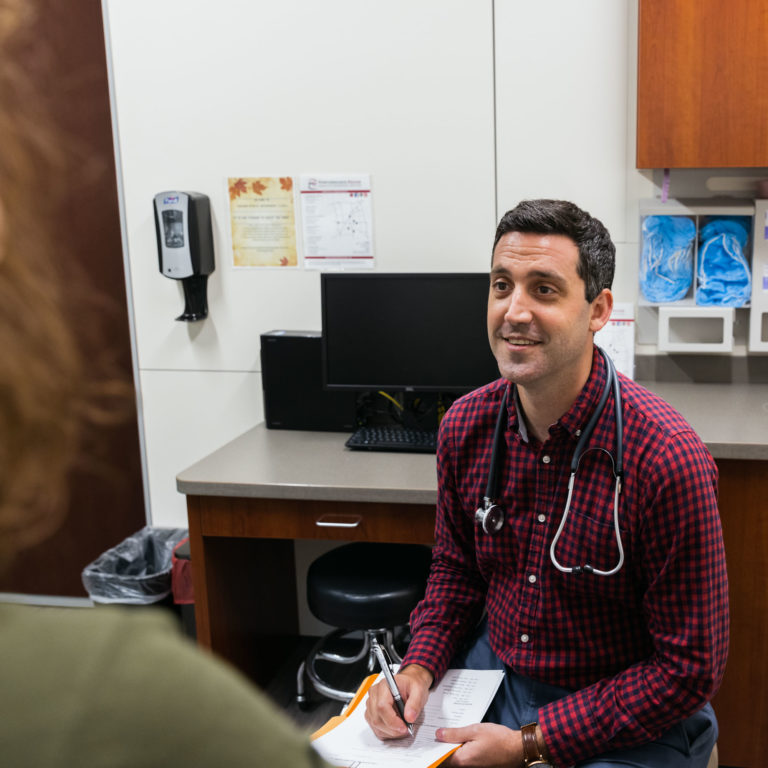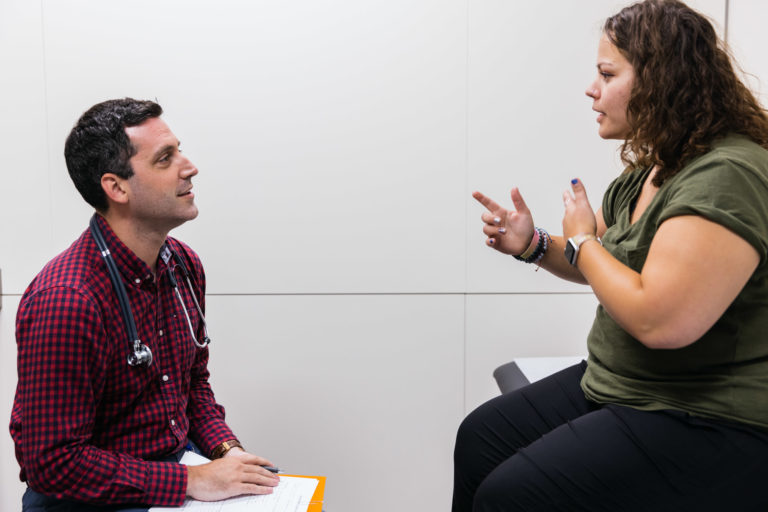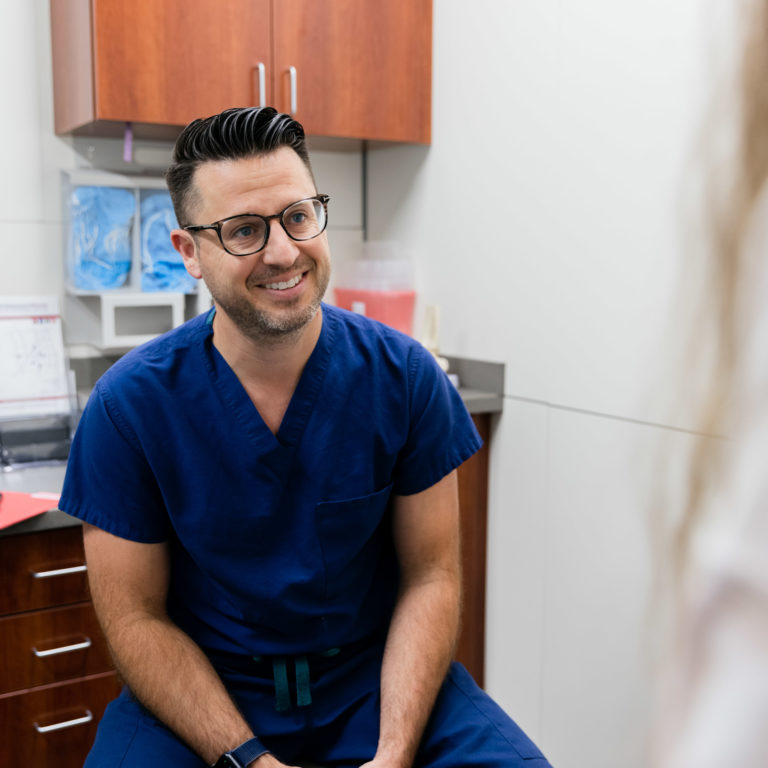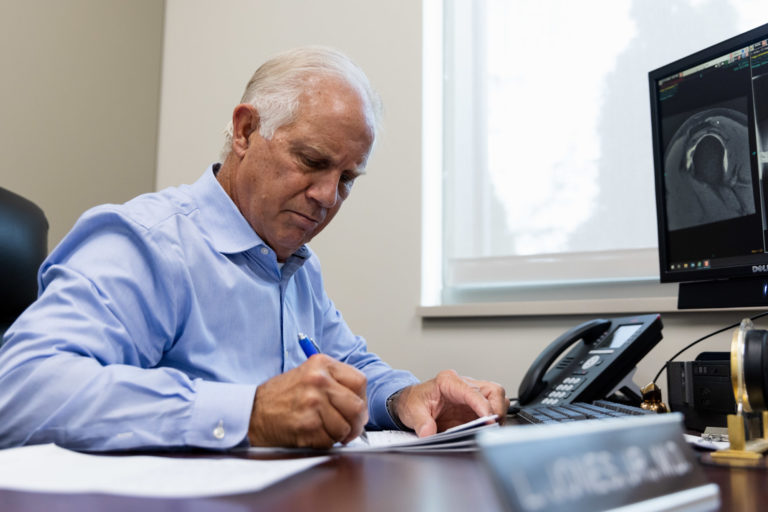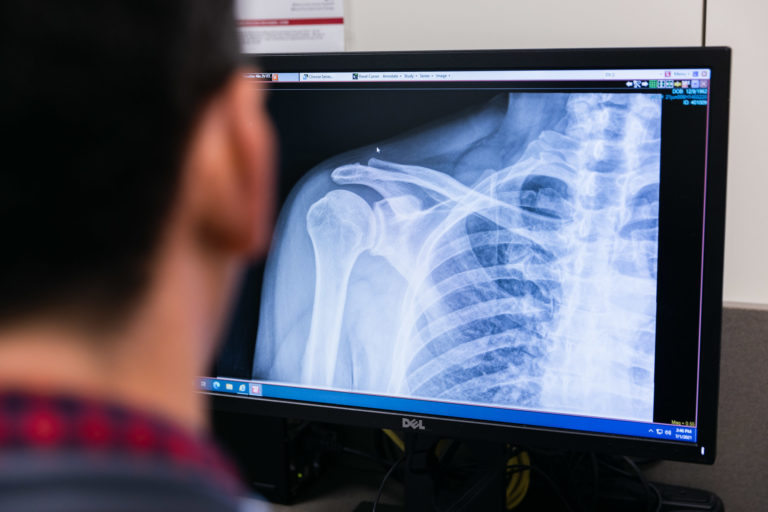Spinal Cord Stimulator Implant in Kansas City
Spinal Cord Stimulator Implantation
Treating back issues at the neurological level.
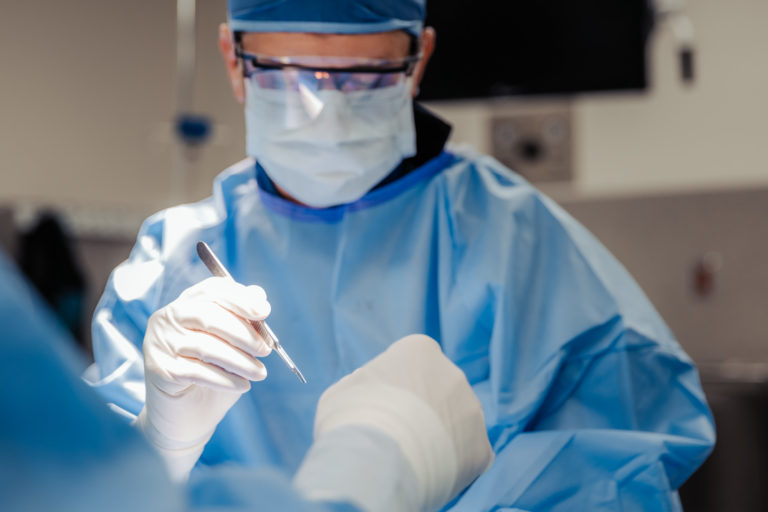
Understanding the Basics Behind Spinal Cord Stimulator Implantation
What is Spinal Cord Stimulator Implantation?
For most people, non-surgical options are all it takes to alleviate spine pain.
But for those patients who require further treatment, a spinal cord stimulator implant in Kansas City might be the best choice.
Spinal cord stimulators are a device implanted directly into your skin, usually near your buttocks or abdomen. This device allows patients to send electrical impulses using a remote control (located outside of the body) when feeling pain.
Whenever pain becomes severe, limits your mobility, or causes you to have trouble sleeping, it’s best to visit a Kansas City Orthopedic Alliance physician.
During your initial visit, we will ask you to fill out paperwork detailing your condition. You should also bring any X-rays or diagnostic tests you’ve had performed prior to coming to KCOA for treatment. Lastly, we’ll require proof of insurance or form of payment for the provision of the services rendered.
Despite the source, for many patients, it is fairly common for the level of back pain to wax and wane. Some signs that a Spinal Cord Stimulator Implant may be necessary include:
- Burning pain
- Shooting or stabbing pain
- Weakness, tingling, or numbing
- Pain down the back of the leg
- Pain that radiates to the hip

Kansas City Orthopedic Alliance Spinal Cord Stimulator Assessment
Assessing the Condition
Finding the right back pain treatment in Kansas City starts with an assessment.
During your appointment, you will meet with your KCOA physician of choice to discuss your condition, pain levels, exacerbating factors that increase or decrease pain, previous treatments, and more. From there, your provider will perform a physical exam and other necessary diagnostic studies. With your history, examination, and test results, your spine surgeon can build a treatment plan and determine whether a spinal cord stimulator implant in Kansas City is your best solution.
How it Works
Spinal Cord Stimulators
Spinal cord stimulators work by replacing normal pain sensations with paresthesia, or light tingling. For patients who are uncomfortable with paresthesia, there are also newer devices with stimulation that can’t be felt.
Spinal cord stimulators work by replacing normal pain sensations with paresthesia, or light tingling.
The Procedure
For patients who are uncomfortable with paresthesia, there are also newer devices with stimulation that can’t be felt.
The procedure starts with an insurance-required psychological evaluation. This is a very common requirement. We have a psychologist we recommend who makes this part of the procedure painless.
Trial Period
Your physician will then start you with a trial period lasting 5-7 days. During this time, your physician will implant a temporary device so you can test if it’s right for you. A unique type of X-ray, called a fluoroscopy, guides your physician as he or she carefully inserts the electrodes in their correct spaces along your spine.
This trial typically only requires one to two needle sticks in your lower back to place the electrodes. Usually, the procedure is also done under “twilight” anesthesia for your comfort. The generator for your temporary device will be outside your body, typically worn on a belt around your waist.
Spinal Cord Stimulator Implantation
If the trial goes well, your physician will move forward with your spinal cord stimulator implantation generally 1-2 weeks later. That procedure usually takes less than one hour and is performed as an outpatient procedure under “twilight “or General Anesthesia.
Your physician will then make an incision near your buttocks to place the generator. Then, a second incision is made along your spine to insert the permanent electrodes. Each incision is roughly the length of a credit card.
Once the electrodes and generator are connected, your physician will close the incisions.
Symptoms
Common Signs & Symptoms of Back Pain
Back pain can manifest in many different forms. Anything from dull aching, acute, point-specific pain to symptoms that radiate into the buttocks, hips, and down the legs are all commonly related to back pain. Debilitating pain, an inability to lift the leg or foot, an inability to stand upright and loss of bowel or bladder control are signs that immediate treatment is necessary.
Causes
Causes of back pain
There are many different causes of back pain. At KCOA, we utilize advanced technologies and testing to accurately diagnose the source of your pain. With a proper diagnosis, we can appropriately assign target therapies and interventions for your specific pain, leading to a faster recovery.
Ongoing Treatment and Continued Care
Once your physician approves normal activities, typically 2 weeks after your procedure, you are free to return to your daily life. The pain relief provided by spinal cord stimulator implants in Kansas City is usually significant; it allows patients to do much more than they could prior to implantation.
There are some lifestyle changes that come with your spinal cord stimulator implant, like turning off the device while driving. You should also always inform any of your doctors about your implant, since diagnostic tests like MRIs can possibly cause issues if they aren’t compatible with your device.
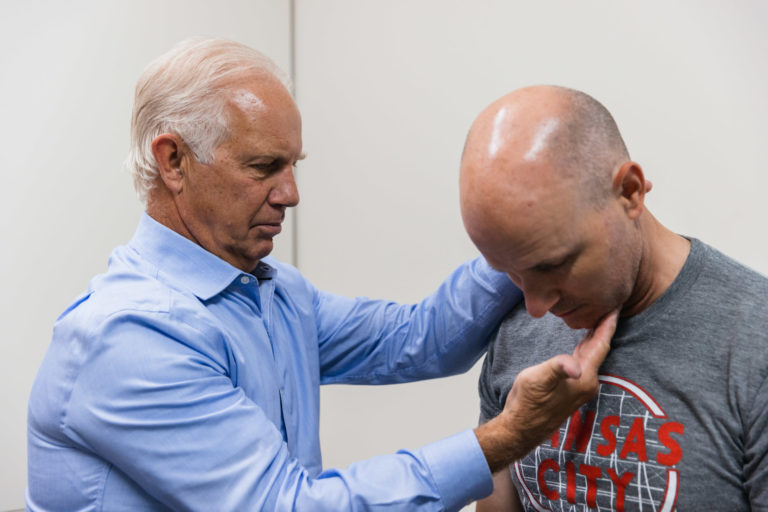
F.A.Q.
Frequently Asked Questions
Don’t compromise quality care.
Our care is personal. Our team is knowledgeable. And we’re more available than ever.
With access to board-certified specialists across Kansas City, we have the tools to meet almost every musculoskeletal condition.
Our Locations
Overland Park, Kansas
10777 Nall Ave Suite 300 Overland Park, KS 66211Leawood, Kansas
3651 College Blvd. Leawood, KS 66211Kansas City, Missouri
Saint Luke's Medical Plaza #1 4320 Wornall Rd., Ste. 610 Kansas City, MO 64111Belton, Missouri
Belton Regional Campus 17067 S Outer Rd #301 Belton, MO 64012Blue Springs, Missouri
St. Mary’s Medical Center, Main Entrance 203 NW R.D. Mize Road, Suite 200 Blue Springs, MO 64014Shawnee Mission, Kansas
7450 Kessler St ste. 140 Merriam, KS 66204Prairie Star (Lenexa, Kansas)
Prairie Star 23401 Prairie Star PkwyBldg. B, Ste. 220 Lenexa, KS 66227

